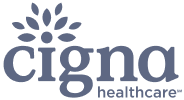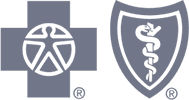Member Spotlight: Chelle’s Story
Mental illness affects people just like me. Mental illness affects people different from me. You can’t just “snap out of it.” And it’s...

It’s normal to feel sad or have days when you feel down. However, if you feel sad, hopeless, unmotivated, or disinterested in things you once enjoyed for more than two weeks, and when the feelings interfere with daily activities–you may have depression. But don’t worry, depression is a treatable condition, affecting nearly 20 million Americans. If you are experiencing symptoms of depression, help is available, and you can get better with the right care.
I started feeling depressed about five years ago, but I couldn’t label the depression. I just felt my energy was low, I was sad a lot of the time. And then I think when I realized it was depression was when I felt that I was not able to get out of bed, that I didn’t want to see people – I realized that this was more than just being sad or being low energy.






Depression is diagnosed by a psychiatric provider looking for the presence of signs and symptoms associated with depression, including the mix and severity of symptoms, context, duration, and life impact. The provider will also want to know about your medical history and family history, as well as current medications you are taking.
Learn More
Because there are many forms of depression and each individual is unique, getting the best result requires matching each person to the right medication, then fine-tuning treatment based on individual response. At Brightside, we pinpoint your FDA-approved match by leveraging your data points and decades of clinical research.
To get the best results, it’s important to measure progress during treatment–this is known as measurement-based care. This allows you and your Provider to make informed decisions for any adjustment in your treatment. It’s common to adjust your medication when first starting antidepressants to make sure its right for you.
Benztropine / Cogentin
Buspirone / Buspar
Clomipramine / Anafranil
Clonidine / Catapres
Topiramate / Topamax
DXM/BUP / Auvelity
Venlafaxine / Effexor
Plus more
At Brightside, we use only evidence-based approaches such as Cognitive Behavioral Therapy (CBT) to help you build skills to more effectively help you break the negative cycle of depression.



Whether you choose Psychiatry, Therapy, or both, our memberships include expert online care designed to help you feel better, faster.
Get access to:
We offer affordable care for everyone and accept most major insurance, including Medicare and Medicaid.







Start with a clinically-proven set of questions to shed light on how you’re feeling. We’ll help you understand your symptoms, then recommend the best treatment plan for you–including Psychiatry, Therapy, or both.

Get matched with an expert Provider for an online video consultation. Share how you’re feeling and then decide on next steps–together.

Stay in touch with your providers with unlimited messaging and video visits.
Then, measure your progress with regular check-ins to monitor your symptoms and make adjustments until your treatment is right for you.